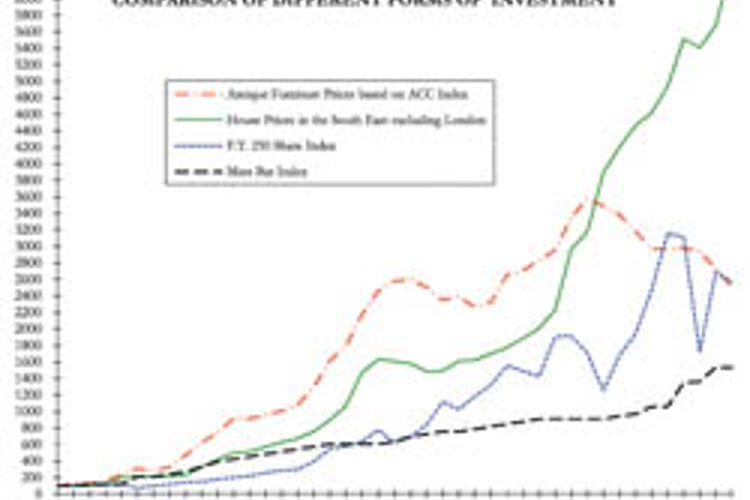
For reasons of fashion and function, prices fell by eight per cent during 2010, the largest ever 12-month drop in the AFI in four decades.
The AFI is based on a blend of retail and auction prices for 1400 typical (rather than exceptional) pieces of furniture from seven different periods or categories pictured in John Andrews' book British Antique Furniture.
The index stood at 100 when Mr Andrews began the project in 1968 and reached an historic high of 3575 points in 2002. But last year, following on from a seven per cent slump in 2009 (the previous record fall), it moved downwards again from 2736 to 2505. It was last at this level in 1996.
The AFI does not reflect the volume of items traded, and nor does it include spectacular sales such as the Harrington marquetry commode attributed to Thomas Chippendale sold for £3.35m at Sotheby's in December, a new record for English furniture.
Historically the strongest of all categories across 42 years, Oak (-12%) and Country (-10%) became the biggest losers in 2010. Displaying a vulnerability not previously recorded by the AFI (but visible at grass-roots level for some time), these double-digit falls reflected disappointing results for former stalwarts such as the high-back dresser.
Mr Andrews cited both a change in taste and a lack of good examples.
Dressers join a long list of once-desirable furniture forms that have lost ground in recent years, particularly those associated with the decline in formal dining or pieces too bulky for the modern interior. For reasons of space, large cabinet furniture, such as the secretaire bookcase, the linen press or the court cupboard, needs exceptional characteristics to find buyers, while for reasons of function the davenport, the canterbury, the bureau and the Pembroke table have lost popular appeal.
All seven of the AFI's constituent indices registered falls, with Walnut (-7%) Regency (-9%) and Early Victorian (-8%) pieces all feeling the pinch. Only items that were well above average in terms of quality, form, colour or provenance maintained their values in 2010.
Early (-6%) and Late Mahogany (-6%), the centre ground of the furniture market, has taken the brunt of the fashionable hostility to 'Georgian brown'. Interestingly, post-1770 mahogany furniture now carries the lowest of all index figures (1860), something Mr Andrew believes should attract canny investors. "The realisation seems to be dawning, however, that antique furniture has been sold at a discount for a long time now; if not yet a wind, a light breeze of change seems to be stirring."
The separate Victorian & Edwardian index, started in 1973 and once the recipient of spectacular gains, continues to nosedive.
Despite occasional anomalies (such as the upholstered tub chair so loved by decorators) standard late 19th and early 20th century cabinetmaking continues to languish among the unfashionable and it dropped a further 10%, mirroring double-digit falls in recent years. Prices at auction in particular have been close to give-away.
Has the market reached its nadir? Despite the doldrums Mr Andrews finds some cause for optimism. "Last year I pointed out that the shape of the ACC Index graph, if the pattern is extrapolated forward, suggested that another recovery was due within two years. One of those years has gone; could it be that rock bottom has finally been reached?"
A fuller analysis of the numbers is published in the February edition of Antique Collectors' Club magazine Antique Collecting.
By Roland Arkell




